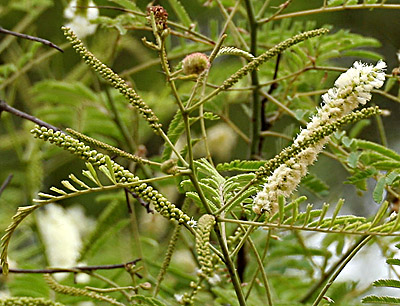 Botanically known as Acacia catechu, Balapatra has several regional names in India. For instance, it is known as balapatra in Sanskrit, black catechu in English, kher in Gujarati, alagjaie in Hindi, khadiram in Malayalam, kaderi in Marathi, bimbu in Oriya, khair in Punjabi, baga in Tamil and kachu in Telegu.
Botanically known as Acacia catechu, Balapatra has several regional names in India. For instance, it is known as balapatra in Sanskrit, black catechu in English, kher in Gujarati, alagjaie in Hindi, khadiram in Malayalam, kaderi in Marathi, bimbu in Oriya, khair in Punjabi, baga in Tamil and kachu in Telegu.
Availability and cultivation of Balapatra Plant
Generally the plant is found in dry forest regions of the Indian sub-continent and in countries like Pakistan and Myanmar. It grows on almost all soil types and in areas which receive rainfall between 500 mm to 2000 mm. The plant is most common in central India and is a part of the deciduous forest in the states of Bihar, Rajasthan and Tamil Nadu.
Characteristic features of Balapatra Plant
Balapatra is a small to medium sized deciduous plant. It has a light leathery crown with a grayish brown rough bark. The flowers are generally cylindrical and sessile in shape and the color is pale yellow in color. The fruits or the pods are wide, flat, thin, brown and shining. Flowers in the plant are found in the months of June to August and the fruits ripen in the month of December to February. It reaches the height up to 9 to 12 meters. This plant has short hooked spines and green leaves are bipinnately compounds with 50 pairs of leaflets which look like beautiful feathers.
Medicinal properties of Balapatra Plant
The most important commercial product obtained from this species is catechu. The pale catechu or the katha obtained from catechu is used for medicinal purposes. It is also used for the purpose of preparing pan. The astringent property of the bark and the heart wood of Balapatra are used in Ayurvedic medicine to treat leprosy, pruritis, wounds, bronchial asthma, distaste and stomatitis.
The bark of Balapatra either alone or in combination with cinnamon and opium is used to treat passive diarrhea or is sometimes taken internally to heal leprosy. Traditionally Katha has been used in Indian medicine and is used in several compound preparations. Balapatra has a special astringent, cooling and digestive quality which is used to treat cough and diarrhea. Sometimes katha is used externally as an astringent and styptic lotion to relieve boils, ulcers and skin eruptions.
Balapatra is also a famous herb used for skin problems and management of blood related disorders. It is a great blood purifier and skin rejuvenating herb. Soft stems of Khadira plant are great for massaging the gums and gentle scrubbing of the teeth on a regular basis. It helps to balance the kapha induced diseases of the oral cavity, gums and teeth. It also helps in fighting obesity which is also a result of imbalanced kapha in the body.
Balapatra has several traditional medicinal purposes but apart from the medicinal uses it has certain commercial uses like the cutch (dark catechu) which is utilized in printing and dyeing.



















